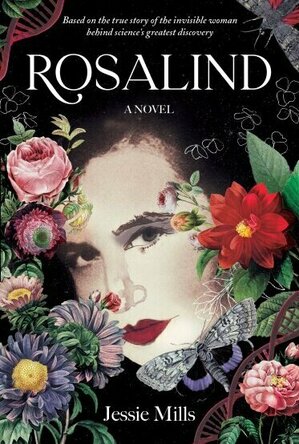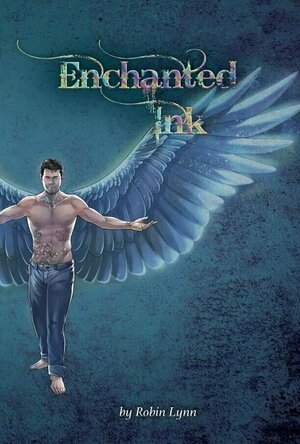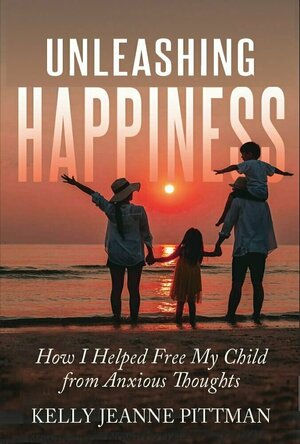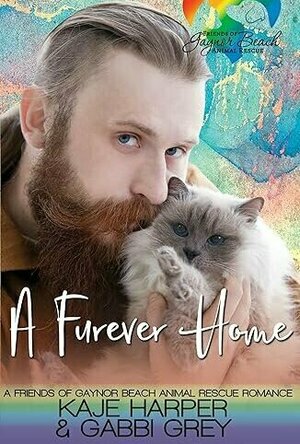Search
Search results

Rosalind: DNA's Invisible Woman
Book
Rosalind: DNA’s Invisible Woman tells the true story of the woman who discovered the structure of...
Historical Fiction Narrative Non Fiction

Enchanted Ink
Book
From beloved romance author, Robin Lynn, comes a hotly-anticipated, fantastical adventure in art,...
Fantasy Romance Futuristic LGBTQIA+

Unleashing Happiness: How I Helped Free My Child from Anxious Thoughts
Book
Is it really possible for a mother to heal her angry child, changing her daughter's personality from...

A Furever Home: A Friends of Gaynor Beach Animal Rescue Romance
Book
A Furever Home Arthur When I was squeezing seven rescue dogs and a horde of cats in my small...
Contemporary MM Romance
RəX Regent (349 KP) rated Wall Street (1987) in Movies
Feb 19, 2019
When looking to review a film like this, there are two distinct points of view to take in to a account:
The first being the contemporary context. That being that this was made in 1987, at the height of the Wall Street boom and that, at the time, this must have been a revelation for so many people, who still had either faith or ignorance about the financial institutions which had metamorphosed into the corrupt capitalist cancer which we all know today.
The later half of the 80’s was to herald the fall of the Gordon Gecco’s and this film, whilst reflecting its time, was also ushering in an era of doom for Wall Street, as well as the continuing propagation of this corruption which would lead to the 2008 crash which are still reeling from today.
So given that like so many films which have essentially whistle blown in there own time, Psycho (1960) also springs to mind, the impact is lessened by thirty years of dilution, in which case it would be unfair to judge the film harshly on the fact that it does not really tell us anything new today.
But when it comes to judging how well the film was made, that is surly timeless.
And considering that Oliver Stone put this together, I was disappointed. The characters where not only dislikable, which I am sure was intentional, they were also poorly written. People just come and go throughout and with the exceptions of Michael Douglas’ Gorden Gecco, Charlie Sheen’s Bud Fox and his real life father, Martin Sheen as Bud’s blue collar dad, the rest of the cast seemed to be wasted.
The plot was all over the place, inconstant and littered with goofs and continuity errors right from the get-go. In fact, it only took a few minutes before I was aghast that a film which begins in 1985 made a reference to Gecco’s ruthlessness by stating that he made money out of the Challenger disaster, which did not occur until January 1986!
Charlie Sheen’s character is difficult to sympathise with, not only because he is trying to be the villain, yet of course he finds his soul by the end, but that he is so utterly naive that it is beyond belief!
It is never clear how much money is being made, who has what or what the real gains or losses are by the end, to the point that whist it is implied that Sheen will be jailed for his insider trading, the film ends before he enters the court and Gecco, who has been recorded by Sheen confessing to his involvement, is never resolved at all!
By the end I was really annoyed by how shallow and lackadaisical the script was, seemingly only really interested in showing the power hungry greed of Wall Street traders at this time.
“Greed is good”.
Well, Mr Stone, so is some exposition.
The first being the contemporary context. That being that this was made in 1987, at the height of the Wall Street boom and that, at the time, this must have been a revelation for so many people, who still had either faith or ignorance about the financial institutions which had metamorphosed into the corrupt capitalist cancer which we all know today.
The later half of the 80’s was to herald the fall of the Gordon Gecco’s and this film, whilst reflecting its time, was also ushering in an era of doom for Wall Street, as well as the continuing propagation of this corruption which would lead to the 2008 crash which are still reeling from today.
So given that like so many films which have essentially whistle blown in there own time, Psycho (1960) also springs to mind, the impact is lessened by thirty years of dilution, in which case it would be unfair to judge the film harshly on the fact that it does not really tell us anything new today.
But when it comes to judging how well the film was made, that is surly timeless.
And considering that Oliver Stone put this together, I was disappointed. The characters where not only dislikable, which I am sure was intentional, they were also poorly written. People just come and go throughout and with the exceptions of Michael Douglas’ Gorden Gecco, Charlie Sheen’s Bud Fox and his real life father, Martin Sheen as Bud’s blue collar dad, the rest of the cast seemed to be wasted.
The plot was all over the place, inconstant and littered with goofs and continuity errors right from the get-go. In fact, it only took a few minutes before I was aghast that a film which begins in 1985 made a reference to Gecco’s ruthlessness by stating that he made money out of the Challenger disaster, which did not occur until January 1986!
Charlie Sheen’s character is difficult to sympathise with, not only because he is trying to be the villain, yet of course he finds his soul by the end, but that he is so utterly naive that it is beyond belief!
It is never clear how much money is being made, who has what or what the real gains or losses are by the end, to the point that whist it is implied that Sheen will be jailed for his insider trading, the film ends before he enters the court and Gecco, who has been recorded by Sheen confessing to his involvement, is never resolved at all!
By the end I was really annoyed by how shallow and lackadaisical the script was, seemingly only really interested in showing the power hungry greed of Wall Street traders at this time.
“Greed is good”.
Well, Mr Stone, so is some exposition.
MaryAnn (14 KP) rated Revealed (Intrigue under Western Skies) (Volume 3) in Books
Mar 5, 2019
Nothing can be hidden that won’t be revealed.
When her father dies, Katherine Levinson discovers her parents have kept secrets that render her happy childhood a farce. She and her gravely ill mother face eviction, and she has no choice but to appeal to the brother she’s never seen, the famous cattle baron, Rhyan Cason. Over her gravely ill mother’s objections, they move to Nebraska and the sprawling cattle ranch, Sollano.
Instead of the warm welcome, Katherine expects, she and her mother are met with whispers and scorn in the little prairie town near Sollano. Gradually, the sins of her parents’ past surface
and Katherine begins to doubt her very identity. With her brother busy with cattle rustlers and her mother too ill to be bothered, Katherine turns to Colt Holliman, a soft-spoken neighboring rancher, for comfort.
Tired of waiting for the right woman to come along, Colt has promised to wait for Charley Ryder, an acclaimed female sharpshooter and equestrian acrobat with the Wild West Show, but it’s becoming clear Charley loves the show more than him. As his attraction to Katherine grows, he finds himself spiritually conflicted. How can he break from past commitments and follow his heart?
Then unexpected danger strikes, testing Katherine’s and Colt’s faith in God—and each other.
My Thoughts: This was a delightful novel to read, the storyline is based in Nebraska. Nebraska is known for their corn, beef , horses ,rodeos and sugar beets! I lived in Nebraska and this brought back some great memories for me. The author has done a phenomenal job of bringing the reader into the ranching life. I love that she brings in the Wild West shows as well, there is so much history from the west that people don't have any idea that living in the west is truly like and the author has given the reader a great glimpse of the history.
Katherine is such a loveable character, the reader feels her plight, her father has passed away, her mother is ill, there are bills to pay. What is she to do?
Katherine sends a letter to a brother she hasn't met which changes her life forever.
Katherine has many things to deal with, the lies that her parents told her, gossip, and of course love. How must it feel to fall in love with someone promised to another? will she repeat her mother's past?
It's not hard to fall in love with Colt. He is every woman's dream, including Katherine's but Colt is promised to Charley; who it seems cares more about herself than anyone else.
This is a novel full of love, mystery, and suspense. It also shows us what happens when the love of money and pride come into our lives. It also teaches us that we must lean on God for everything and to turn to him when times get troubled.
I enjoyed the author's writing and will certainly be looking forward to reading more from Elaine Manders.
When her father dies, Katherine Levinson discovers her parents have kept secrets that render her happy childhood a farce. She and her gravely ill mother face eviction, and she has no choice but to appeal to the brother she’s never seen, the famous cattle baron, Rhyan Cason. Over her gravely ill mother’s objections, they move to Nebraska and the sprawling cattle ranch, Sollano.
Instead of the warm welcome, Katherine expects, she and her mother are met with whispers and scorn in the little prairie town near Sollano. Gradually, the sins of her parents’ past surface
and Katherine begins to doubt her very identity. With her brother busy with cattle rustlers and her mother too ill to be bothered, Katherine turns to Colt Holliman, a soft-spoken neighboring rancher, for comfort.
Tired of waiting for the right woman to come along, Colt has promised to wait for Charley Ryder, an acclaimed female sharpshooter and equestrian acrobat with the Wild West Show, but it’s becoming clear Charley loves the show more than him. As his attraction to Katherine grows, he finds himself spiritually conflicted. How can he break from past commitments and follow his heart?
Then unexpected danger strikes, testing Katherine’s and Colt’s faith in God—and each other.
My Thoughts: This was a delightful novel to read, the storyline is based in Nebraska. Nebraska is known for their corn, beef , horses ,rodeos and sugar beets! I lived in Nebraska and this brought back some great memories for me. The author has done a phenomenal job of bringing the reader into the ranching life. I love that she brings in the Wild West shows as well, there is so much history from the west that people don't have any idea that living in the west is truly like and the author has given the reader a great glimpse of the history.
Katherine is such a loveable character, the reader feels her plight, her father has passed away, her mother is ill, there are bills to pay. What is she to do?
Katherine sends a letter to a brother she hasn't met which changes her life forever.
Katherine has many things to deal with, the lies that her parents told her, gossip, and of course love. How must it feel to fall in love with someone promised to another? will she repeat her mother's past?
It's not hard to fall in love with Colt. He is every woman's dream, including Katherine's but Colt is promised to Charley; who it seems cares more about herself than anyone else.
This is a novel full of love, mystery, and suspense. It also shows us what happens when the love of money and pride come into our lives. It also teaches us that we must lean on God for everything and to turn to him when times get troubled.
I enjoyed the author's writing and will certainly be looking forward to reading more from Elaine Manders.
Nicole Hadley (380 KP) rated The Seekers (Amish Cooking Class, #1) in Books
Jun 16, 2018
Showing Amish culture
Contains spoilers, click to show
The Seekers is the first installment to Wanda Brunstetter's newest series, Amish Cooking Class. I really enjoyed this book. In The Seekers, Heidi starts an Amish cooking class. I loved all the different individuals and their own stories and what bought each one to the cooking class held by Heidi.
This book revolves around a woman named Heidi Troyer and her Amish cooking class.Heidi Troyer and her husband of eight years, Lyle, have no children yet. She loves her Lyle and their life together but desires children, also. Lyle refuses to adopt, believing that if it is God’s will, Heidi will be able to conceive a child. Heidi considers giving cooking classes since cooking has come naturally to her and classes won’t take time away from her husband. Heidi will lead six lessons over the next three months.
The Lord prepares students for her first class. The students come with different problems to the classes and through out the book, they find solutions. First is Loretta, a widow and single mother of two little kids that just wants to learn a more simpler way of life. She wants to know more about being Amish, so learning Amish cooking in an Amish home sounds beneficial.
Second, Charlene is engaged to a wonderful man, but has no experience in the kitchen. Her financé has a mother who is an expert cook and doesn’t like Charlene. She doesn’t want her future mother-in-law to know she can’t cook.
Third is Eli, is a young widowed man who is part of the Amish community and also doesn't know how to cook much of anything. His wife had been killed by a hit-and-run driver. He couldn’t cook, and eats out frequently after work.
Fourth, Kendra is a young lady who got pregnant out of wedlock and was kicked out of her home by her dad so he wouldn’t be embarrassed in front of church or social friends. The young man also left her.
Last but not least is Ron. He pulls his older RV into the Troyer’s yard, hungry and broke. He tells Heidi and Lyle the first lie, that his rig needs repairs and he needs a place to park until he can repair it. He ends up in the cooking class without planning to be there. The Troyers share their food and time, but he holds his secrets close. A Viet Nam vet with PTSD, Ron always finds ways to justify what he does.
Most of the characters are very likable. We see Heidi as a three-dimensional woman of faith, and get to know her students through their everyday lives. I love how this book focuses so much on God. I also love the recipes and how after each class she gives a notecard with the recipe and a verse on the back.
This book revolves around a woman named Heidi Troyer and her Amish cooking class.Heidi Troyer and her husband of eight years, Lyle, have no children yet. She loves her Lyle and their life together but desires children, also. Lyle refuses to adopt, believing that if it is God’s will, Heidi will be able to conceive a child. Heidi considers giving cooking classes since cooking has come naturally to her and classes won’t take time away from her husband. Heidi will lead six lessons over the next three months.
The Lord prepares students for her first class. The students come with different problems to the classes and through out the book, they find solutions. First is Loretta, a widow and single mother of two little kids that just wants to learn a more simpler way of life. She wants to know more about being Amish, so learning Amish cooking in an Amish home sounds beneficial.
Second, Charlene is engaged to a wonderful man, but has no experience in the kitchen. Her financé has a mother who is an expert cook and doesn’t like Charlene. She doesn’t want her future mother-in-law to know she can’t cook.
Third is Eli, is a young widowed man who is part of the Amish community and also doesn't know how to cook much of anything. His wife had been killed by a hit-and-run driver. He couldn’t cook, and eats out frequently after work.
Fourth, Kendra is a young lady who got pregnant out of wedlock and was kicked out of her home by her dad so he wouldn’t be embarrassed in front of church or social friends. The young man also left her.
Last but not least is Ron. He pulls his older RV into the Troyer’s yard, hungry and broke. He tells Heidi and Lyle the first lie, that his rig needs repairs and he needs a place to park until he can repair it. He ends up in the cooking class without planning to be there. The Troyers share their food and time, but he holds his secrets close. A Viet Nam vet with PTSD, Ron always finds ways to justify what he does.
Most of the characters are very likable. We see Heidi as a three-dimensional woman of faith, and get to know her students through their everyday lives. I love how this book focuses so much on God. I also love the recipes and how after each class she gives a notecard with the recipe and a verse on the back.
Alice (12 KP) rated Twist (Dive Bar, #2) in Books
Jul 3, 2018
This review can be found on my blog <a href="https://raptureinbooks.com/2017/03/13/arc-review-twist-by-kylie-scott/">here</a href>
<i>I received an ARC copy of this book from the publisher in exchange for an honest review</i>
Twist is the second instalment in the Dive Bar series from Kylie Scott and it was much better than the first one Dirty. Twist follows Joe Collins and Alex Parks (a new character that we’re introduced to in this book) as they right their wrongs – or rather, Joe rights his wrong and Alex does her utmost to make things hard for him.
The story begins with Alex Parks appearing at the Dive Bar on a random to meet Eric Collins, Joe’s brother. It appears that judging from the beginning of the book that Eric and Alex have been conversing via online dating for a while before she takes a leap of faith and goes to meet Eric for his birthday.
Disaster.
But this was expected, as to be fair, there wouldn’t be a book if there wasn’t at least one disaster to be fixed!
What follows is one of the best written contemporary novels I’ve read in a long time; there was plenty of humour and drama, characters to fall in love with and a storyline of catfish proportions. There was a perfect balance between the two main characters and the secondary characters with little friction but with a quick & wicked sense of camaraderie between all the Dive Bar and Alex.
You know how a book is generally considered good when part of the plot gives you a sucker punch to the gut like no other? Twist had this and it had it in spades. I was already feeling poorly and receiving this ARC made my week; that one section though. Kylie – no word of a lie, brought a little tear to my eye. Such a hard hitting side arc.
At first I was a little off put by Alex as she seemed really uncomfortable in the situation but as the story progressed Kylie explained the whys and wherefores and it made her reactions to certain things make all the more sense. Joe was just as mysteriously bearded as he was in Dirty and it was lovely to see the other side to Joe that we see in this book.
It was a little shorter than I expected – length wise – but it was incredibly fast paced and before I knew it I’d blasted through 20% in under 15 minutes which is another sure fire sign of a great book.
Kylie’s writing has done nothing but improve over the course of her books and another great part about Twist? The Stage Dive boys & girls were back in town! The ending was perfect and I mean that in all the ways. I need the next book Chaser ASAP.
It’s hard reviewing this book without giving away any crucial details.
<i>I received an ARC copy of this book from the publisher in exchange for an honest review</i>
Twist is the second instalment in the Dive Bar series from Kylie Scott and it was much better than the first one Dirty. Twist follows Joe Collins and Alex Parks (a new character that we’re introduced to in this book) as they right their wrongs – or rather, Joe rights his wrong and Alex does her utmost to make things hard for him.
The story begins with Alex Parks appearing at the Dive Bar on a random to meet Eric Collins, Joe’s brother. It appears that judging from the beginning of the book that Eric and Alex have been conversing via online dating for a while before she takes a leap of faith and goes to meet Eric for his birthday.
Disaster.
But this was expected, as to be fair, there wouldn’t be a book if there wasn’t at least one disaster to be fixed!
What follows is one of the best written contemporary novels I’ve read in a long time; there was plenty of humour and drama, characters to fall in love with and a storyline of catfish proportions. There was a perfect balance between the two main characters and the secondary characters with little friction but with a quick & wicked sense of camaraderie between all the Dive Bar and Alex.
You know how a book is generally considered good when part of the plot gives you a sucker punch to the gut like no other? Twist had this and it had it in spades. I was already feeling poorly and receiving this ARC made my week; that one section though. Kylie – no word of a lie, brought a little tear to my eye. Such a hard hitting side arc.
At first I was a little off put by Alex as she seemed really uncomfortable in the situation but as the story progressed Kylie explained the whys and wherefores and it made her reactions to certain things make all the more sense. Joe was just as mysteriously bearded as he was in Dirty and it was lovely to see the other side to Joe that we see in this book.
It was a little shorter than I expected – length wise – but it was incredibly fast paced and before I knew it I’d blasted through 20% in under 15 minutes which is another sure fire sign of a great book.
Kylie’s writing has done nothing but improve over the course of her books and another great part about Twist? The Stage Dive boys & girls were back in town! The ending was perfect and I mean that in all the ways. I need the next book Chaser ASAP.
It’s hard reviewing this book without giving away any crucial details.
BookwormMama14 (18 KP) rated The Thorn Keeper (Penned in Time #2) in Books
Jan 2, 2019
If you were to ask me right now, what my favorite book of the year is...I would mumble and grunt for a few minutes and then rattle off a list of at least 10 books. But without a doubt, The Thorn Keeper will be at the top of the list.
The Thorn Keeper posses a certain eloquence that enraptures you from the very beginning. I can't count the number of times that I had tears in my eyes as I read (tearing up right now in fact, thinking about the message of this story), or squealed with delight, or wanted to purse whomp someone, and there was one instance that I was in such shock, I literally felt like I was going to hurl. Out of all the books that I have read this year, The Thorn Keeper is the one that touched the depth of my soul in a way that completely turned my world upside down. The romance is so sweet and quite passionate (all clean of course), but that only scratches the surface of the content of the book.
Whether through decisions in our past or reasons unknown to us, sometimes we have been given difficulties that we have to walk through. We would not recommend making those choices and hope that others are spared the pain and suffering we have endured. Yet even though it is hard, we would not be the people we are today if we had not gone through it. God has brought us through the valley...Not so that we can look over our shoulder and long to be back on the other side, but to look forward and press onwards. Do not let your dreams be forgotten along the way. Even if it doesn't seem as if they can or will ever come true. If God has placed a dream in your heart, never let go of it. Whether it is ministry, missions, art, dance, fashion or family.
In conclusion, I would have to say that Pepper Basham's books are among the best I have ever read. Filled with hard lessons and real life, balanced with passion and faith. Only a very talented author can take someone whom I despised in book one, bring them to redemption, and within 36 pages of the book they find a way to worm their way into my heart. Catherine and David's journey of discovering true love is so very tender. When life throws them a curveball, will they rely on their own strength to make it through, or will they trust in the love of the Father to carry them? In order to truly understand and appreciate Catherine and David's history, I highly recommend reading The Thorn Bearer first (which is another favorite of mine).
I purchased a print copy of The Thorn Keeper for my personal enjoyment. I was not required to write a review, positive or otherwise. All opinions expressed are mine alone.
The Thorn Keeper posses a certain eloquence that enraptures you from the very beginning. I can't count the number of times that I had tears in my eyes as I read (tearing up right now in fact, thinking about the message of this story), or squealed with delight, or wanted to purse whomp someone, and there was one instance that I was in such shock, I literally felt like I was going to hurl. Out of all the books that I have read this year, The Thorn Keeper is the one that touched the depth of my soul in a way that completely turned my world upside down. The romance is so sweet and quite passionate (all clean of course), but that only scratches the surface of the content of the book.
Whether through decisions in our past or reasons unknown to us, sometimes we have been given difficulties that we have to walk through. We would not recommend making those choices and hope that others are spared the pain and suffering we have endured. Yet even though it is hard, we would not be the people we are today if we had not gone through it. God has brought us through the valley...Not so that we can look over our shoulder and long to be back on the other side, but to look forward and press onwards. Do not let your dreams be forgotten along the way. Even if it doesn't seem as if they can or will ever come true. If God has placed a dream in your heart, never let go of it. Whether it is ministry, missions, art, dance, fashion or family.
In conclusion, I would have to say that Pepper Basham's books are among the best I have ever read. Filled with hard lessons and real life, balanced with passion and faith. Only a very talented author can take someone whom I despised in book one, bring them to redemption, and within 36 pages of the book they find a way to worm their way into my heart. Catherine and David's journey of discovering true love is so very tender. When life throws them a curveball, will they rely on their own strength to make it through, or will they trust in the love of the Father to carry them? In order to truly understand and appreciate Catherine and David's history, I highly recommend reading The Thorn Bearer first (which is another favorite of mine).
I purchased a print copy of The Thorn Keeper for my personal enjoyment. I was not required to write a review, positive or otherwise. All opinions expressed are mine alone.



